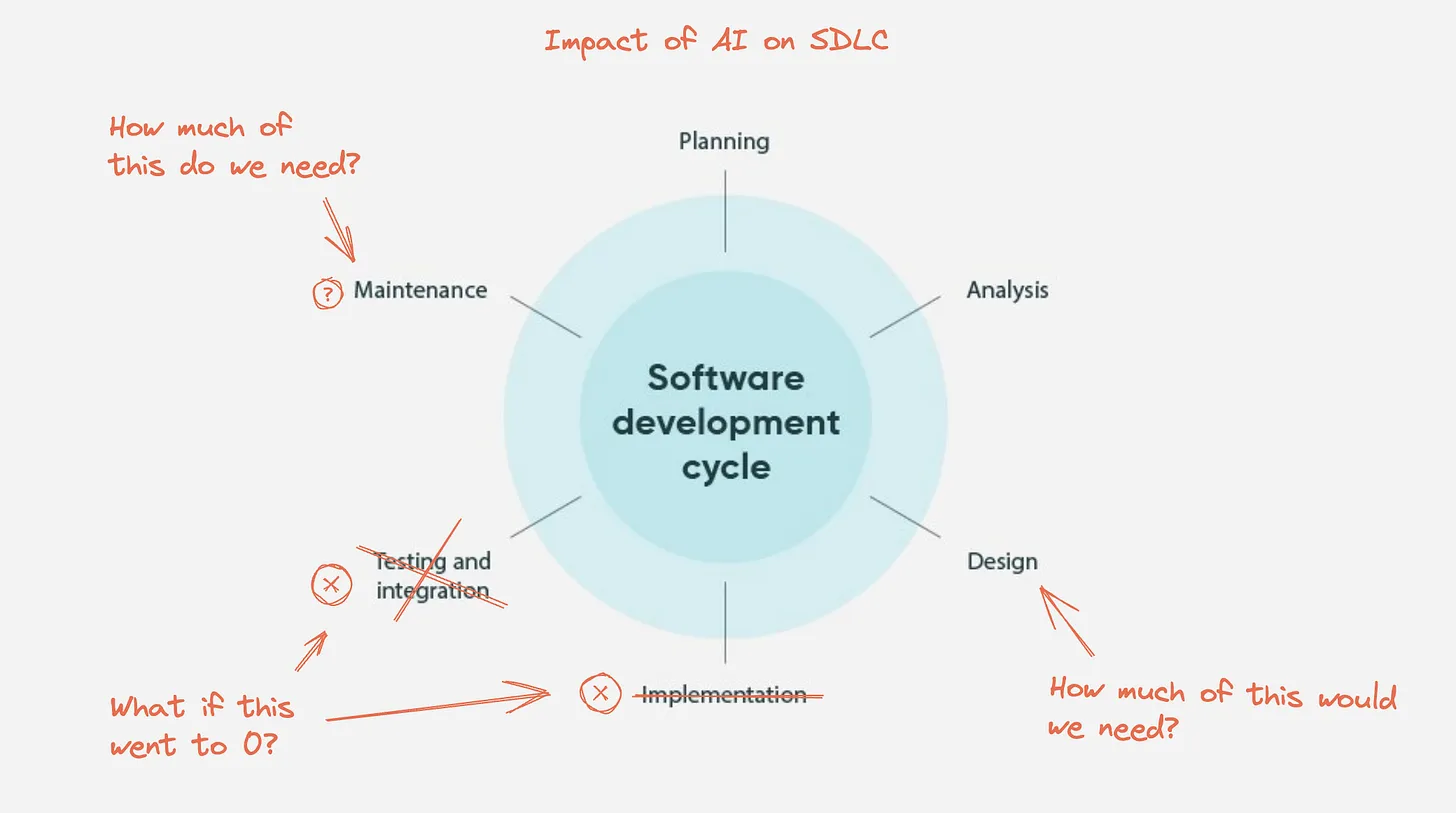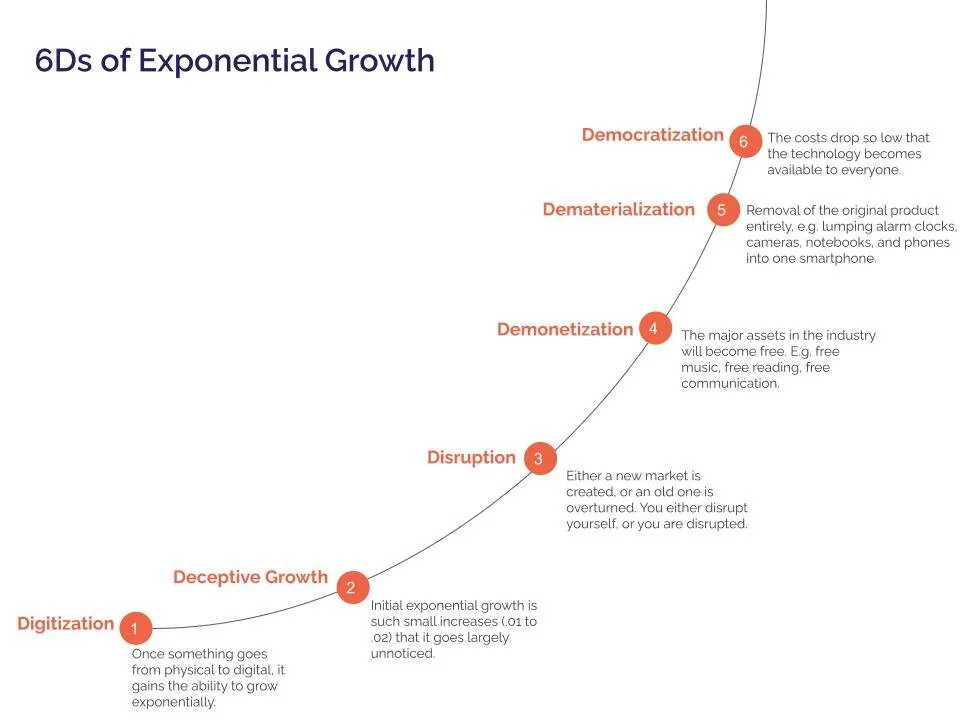The Economics of Abundance: What Do You Charge When Software is Free to Produce

If you're just joining us, this series (read the first article here) follows the journey of a brilliant product manager, you. You've steered the product strategy of a company, Warehouse Software Inc, through 3 decades of technology disruptions. But in 2026, the company faces its biggest test yet - the ascendance of AI. The CEO has called an offsite, and the team is grappling with the implication of AI and how the flagship product, Warehouse Tracker, should respond to the change. As others lobby for quick answers, you urge the team to return to first principles and delve into the real implication of AI on the entire value chain - not just at the feature level.
The last session ended with you making the case that AI will enable on-demand customized software at no extra cost.
We pick the story back up at the next session of the offsite.
The morning sun filters through the floor-to-ceiling windows of the hotel conference room as the leadership team gathers over coffee and pastries. The chatter and pleasantries are brief. There is no doubt the team is ready to dive in.
The CEO kicks off the meeting with an agenda for tackling questions systematically. “Let’s start at 50,000 feet before diving into details,” he suggests.
3D printing apps into existence
First to speak is a venture capitalist on the board. He’s witnessing this challenge across his portfolio companies. “I’ve been pondering your analogy about Banana Republic,” he says, referring to your analogy of how AI-generated software was like Banana Republic custom stitching shirts on demand for no extra cost at their stores.
“The potential of customization at scale would be incredible if customers could get one-off solutions tailored to them without requiring us to add that functionality for everyone.” It reminds him of 3D printing, which his firm has invested heavily in.
“3D printing enables customization and short runs, unlike traditional manufacturing, which has huge upfront costs and minimum orders,” he continues. “AI-powered on-demand software generation could transform industries similarly.”
The VP of Sales rolls her eyes, doubting this vision can deliver. “Back in 2013, Gartner predicted cheap 3D printers, but they’re still mostly hype, like 3D TVs and the metaverse.”
Software is like pulling teeth?
The board member listens patiently, then speaks. “It’s true 3D printing hasn’t delivered killer apps for homes yet, but it’s significantly impacting industries.”
He points to orthodontics as an example. “Traditionally, orthodontists bond braces to teeth and connect them with wires. It’s a one-size-fits-all solution, requiring experts to manually adjust wires every few weeks over 2-3 years. Unpleasant, to say the least.”
Nods ripple through the room as others recall their experience with braces.
“Then in 1997, a Stanford student thinks, ‘This is nuts. Couldn’t this be done with clear, removable aligners?’ Invisalign was born and is changing the industry by custom-printing aligners for each patient. Users swap them weekly without orthodontist visits, a far better experience.”
In 2022, Invisalign’s parent company had nearly $4 billion in revenue.
“In software, most customers today face similar unpleasant ‘orthodontic torture,’” he observes. “They pay for software that doesn’t suit their needs, then pay more to customize it. According to an Aberdeen Research report, companies waste almost a third of software licenses purchased, an estimated $30 billion annually just in the U.S.”
You grimace, thinking of the “eye chart” that is Okta’s interface for managing user access—software to manage software—the painful irony.
“But what if software could be 3D-printed, tailored to each customer like Invisalign?” your board member wonders.
Subscribed
What happens to software companies?
The CFO looks up from their scribbled notes. “If the future you predict comes to pass, won’t software companies be in trouble? Won’t our customers simply generate their own customized warehouse inventory apps and stop paying us?”
You grab a marker and head to the whiteboard. “That’s possible. Look at Invisalign. They innovated 3D-printed aligners but remain vulnerable to competition. Cheaper 3D printing options arose, and now dentists can even print aligners in-office, controlling the experience and cutting out Invisalign."

You sketch a diagram of the software development process, thinking aloud. “We envision a product idea and generate plans—but the final step, building software, is manual and time-intensive, like skilled manufacturing. The question is: what happens when that process is digitized?”
The CFO nods, following your logic. The board member who cited Invisalign leans forward, intrigued at where this is heading.
Digitization leads to demonetization

Peter Diamandis: 6Ds of exponential growth
You continue, "One model we can use to predict the future is the "6Ds of exponential growth" by the futurist Peter Diamandis. The 6D model articulates how exponential technologies move through interconnected phases of digitization, deception, disruption, democratization, dematerialization, and demonetization. Those able to anticipate and adapt to these forces have the potential to harness their transformative power. But those who fail to adapt risk being left behind in a post-digital world very different from the one they have long known. Let's look at each of these phases and apply them to our current situation"
"Digitization means converting analog processes into digital ones, like how Dycam's first digital camera in 1990 digitized photography. For us, AI is digitizing how we develop software functionality. Once digitized, a process accelerates and scales fast."
"Deception refers to how exponential changes start slowly, then surprise us. Early digital cameras went from .01 to .02 megapixels slowly, then accelerated rapidly. AutoGPT and BabyAI are early examples of where AI for software could go. Dismissing them risks missing the trend until it's too late."
"Disruption means digitized tech leapfrogs existing processes, like how digital cameras outcompeted film by eliminating costs. For software, AI could disrupt how we customize solutions by reducing costs and effort to zero."
"Democratization makes powerful technology accessible to all. As digital cameras got cheap, more amateur photographers emerged. For us, even small clients could access robust inventory software. But it also means smaller startups can out-punch us."
"Demonetization means digitized tech races to become nearly free. Digital cameras dematerialized the need for film and prints. For software, what do we charge for if AI takes over software development and professional services?"
You finish scribbling the last D and turn to the group. Discomfort is etched on every face.
The CEO strides to the board and writes: “Any time there is change, there is opportunity.” —Jack Welch. The entrepreneur in him relishes this moment.
He turns, eyes alight. "We've thrived for over 30 years. But I always knew we could achieve more. This moment in our industry’s history affords a unique chance. If AI lives up to its potential, it could upend everything for customers and competitors alike. "
"Digital photography destroyed Kodak, Minolta, 1-hour photo labs, and many other businesses. But it also created Instagram and fueled Adobe's growth."
"The future is coming, but we can shape it. To do so, we must understand—really understand—how we provide value. We’ve had a productive morning. Let’s break for lunch and reconvene to dive deeper into our value chain and examine the impact AI will have on it”
Tune in next week.
Want these insights delivered? Subscribe below.
 R
R